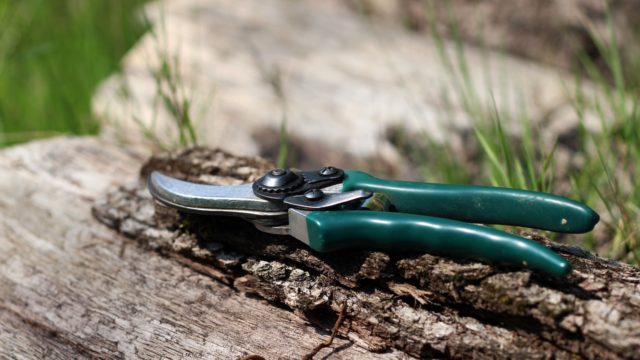Tree & Shrub Aftercare
You’ve done your homework and planted your new tree or shrub in an appropriate location in your yard. Now, that planting’s continued survival depends on proper aftercare and maintenance for the next year.
The wide range of tree and plant varieties, soil types, and weather conditions make it difficult to give hard and fast watering rules, but there a few recognized “best practices.” Here’s what you need to know.
Watering
Mulched plants will stay cool and moist far longer than non-mulched plants. A 2- to 3-inch layer of organic mulch is sufficient, and will add beauty to the planting. However, remember to avoid the dreaded “mulch volcano.” Do NOT pile mulch against the trunk or stem of a tree or shrub. Mulch should be thin near the crown and thicker over the root zone. The root flare, or widening portion of the trunk next to the soil surface, should be visually obvious after mulching.
Young plants generally require thorough watering once or twice a week depending on the season, weather, and soil conditions.
It’s smart to visually check new plantings often and feel the soil several inches under the surface. Careful observation and diligence are vital.
Bear in mind that occasional deep watering is much more beneficial than frequent superficial watering. (The latter is often found on sprinkler system settings.)
During time of excess rain, make sure sprinklers are turned off.
Overwatering can lead to root rot issues caused by soil-borne fungi. If a wilted plant does not perk up several hours after a deep soaking, do NOT continue to water the plant. Allow the soil to dry between waterings (especially when tending rhododendrons).
Watering in Dry Conditions
Hot, dry weather and drought conditions call for extra vigilance. Smaller root balls will dry out faster than larger ones, and container plants tend to dry out faster than plants that have been grown in the ground. When irrigating, it is very important to water larger trees and shrubs deeply enough to penetrate the dry, hardened soil.
We frequently experience water restrictions in our area. While this normally does not preclude hand watering of new plantings, one can get creative and use stored rain water or “recycled” cooking or bath water. Gator bags are a great way to efficiently water trees and large shrubs during periods of drought.
Be aware that early spring or late fall can also be dry. Autumn plantings may not have sufficiently established roots to handle a dry, snowless winter or extended periods of frozen soil. Applying an anti-desiccant, such as Wilt-Proof, in late fall can prevent winter dehydration injury in broadleaf evergreens such holly and rhododendrons. Plants should be dormant and not in active growth when the anti-desiccant is applied.
Fertilization
Heavy fertilization is not recommended for new transplants. A slow-release starter fertilizer, such as Master Start, seaweed/fish emulsion, etc., will satisfy the plant’s initial fertilizer requirements for about 6 weeks. After that, a monthly application of an all-purpose liquid formula (18-18-18, or a similar product) will provide the nutrients the plant needs to establish itself and thrive that first year. Espoma granular products (Holly-tone, Plant-tone, and Tree-tone) may be used in subsequent years.

